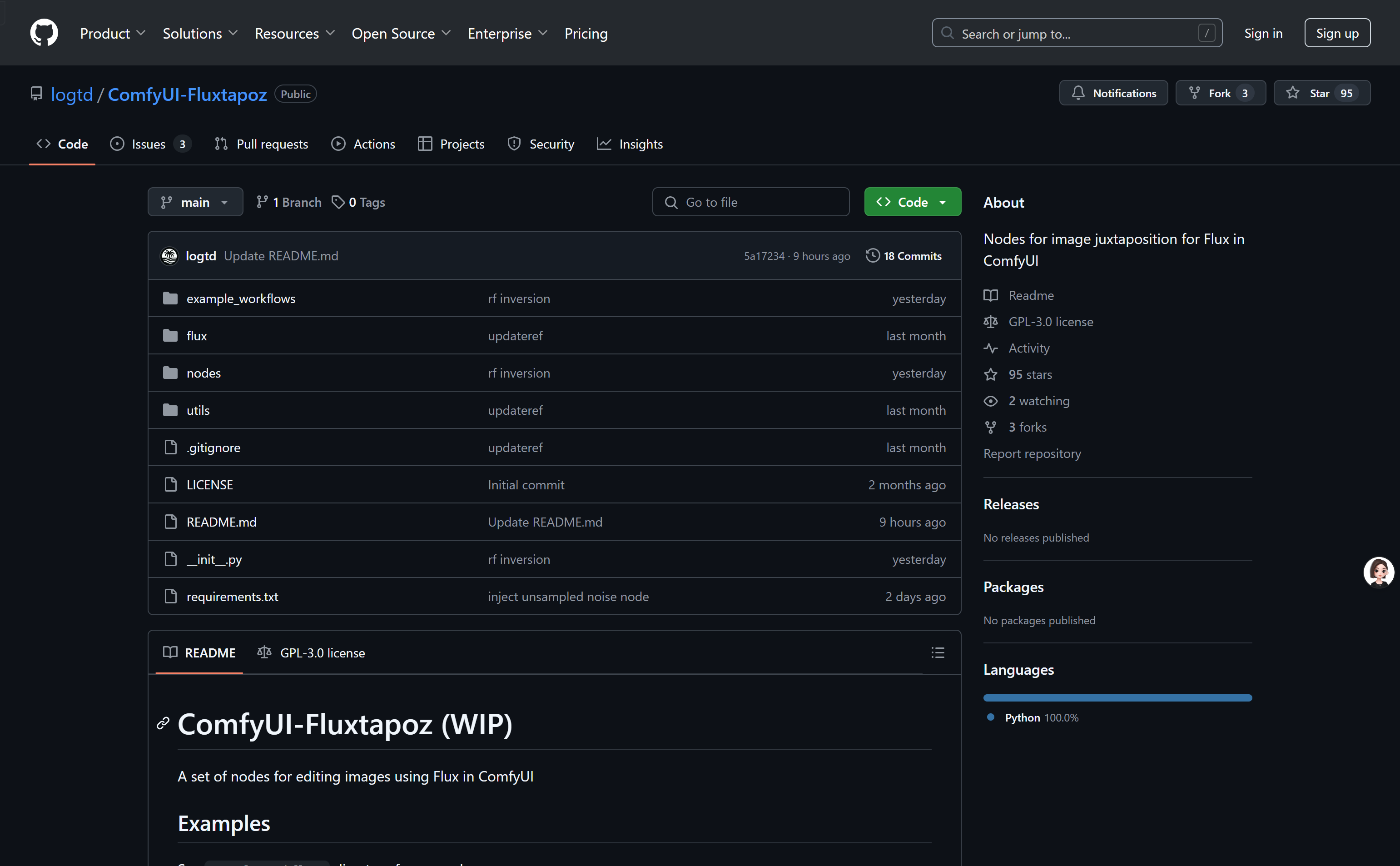

Comfyui Fluxtapoz
Overview :
ComfyUI-Fluxtapoz is a collection of nodes designed for editing images in ComfyUI using Flux. It enables users to edit images and apply style transformations through a series of node operations, making it particularly suitable for professionals engaged in image processing and creative work. This project is currently open-source and follows the GPL-3.0 license, meaning users can freely use, modify, and distribute the software, provided they adhere to the terms of the open-source license.
Target Users :
The target audience primarily includes image editors, designers, and developers who need a flexible and powerful tool for processing and creating image content. ComfyUI-Fluxtapoz offers a node-based editing approach, allowing these professionals to have more precise and creative control over the image processing workflow.
Use Cases
Designers use ComfyUI-Fluxtapoz to apply style transformations to product images.
Photographers utilize this tool for high-quality image editing of their captured photos.
Developers integrate ComfyUI-Fluxtapoz into their applications to provide image editing capabilities.
Features
Image Overlay Editing: Allows users to perform overlay editing on images within ComfyUI.
RF Inversion: Provides a method for image resampling from RF inversion, suitable for editing or style transformation.
Node Parameter Settings: Users can adjust various node parameters as needed, such as latent_image, start_step, end_step, and eta.
Multiple Sample Workflows: Offers several sample workflows to assist users in understanding and learning how to use these nodes.
Open Source License: Adheres to the GPL-3.0 open-source license, allowing for broad community participation and contributions.
Continuous Updates: The project is regularly updated to fix issues and introduce new features.
How to Use
1. Visit the GitHub page and download the source code for the ComfyUI-Fluxtapoz project.
2. Read the README file to understand the basic information and installation requirements of the project.
3. Follow the guidelines to install all necessary dependencies.
4. Open the example workflow directory to review the provided JSON configuration files and learn about the configuration and function of different nodes.
5. Adjust the workflow configuration as needed, setting parameters such as latent_image and start_step.
6. Run the workflow, observe, and tweak the results until you achieve a satisfactory image editing effect.
7. Explore other nodes and features, experimenting with different editing techniques and style transformations.
Featured AI Tools
Chinese Picks

Capcut Dreamina
CapCut Dreamina is an AIGC tool under Douyin. Users can generate creative images based on text content, supporting image resizing, aspect ratio adjustment, and template type selection. It will be used for content creation in Douyin's text or short videos in the future to enrich Douyin's AI creation content library.
AI image generation
9.0M

Outfit Anyone
Outfit Anyone is an ultra-high quality virtual try-on product that allows users to try different fashion styles without physically trying on clothes. Using a two-stream conditional diffusion model, Outfit Anyone can flexibly handle clothing deformation, generating more realistic results. It boasts extensibility, allowing adjustments for poses and body shapes, making it suitable for images ranging from anime characters to real people. Outfit Anyone's performance across various scenarios highlights its practicality and readiness for real-world applications.
AI image generation
5.3M














